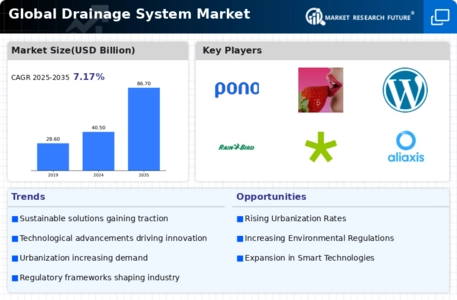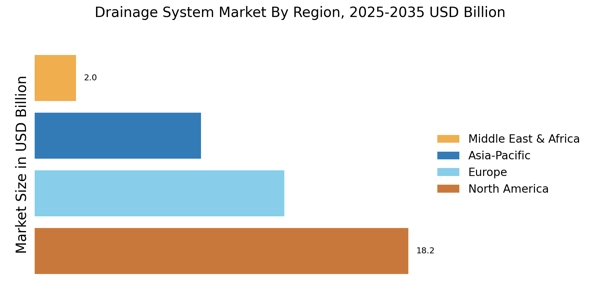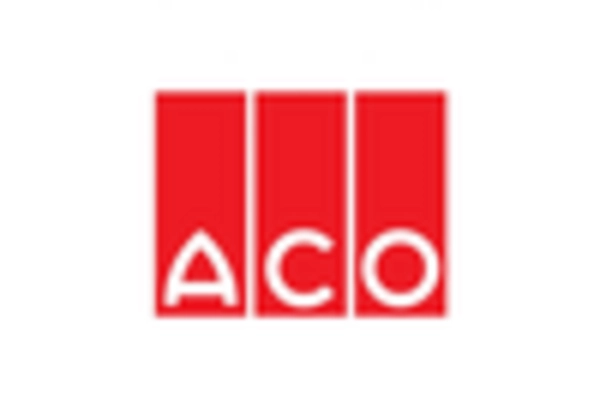Urbanization and Population Growth
The rapid urbanization and population growth are driving the demand for efficient drainage systems. As cities expand, the need for effective drainage solutions becomes paramount to manage stormwater and prevent flooding. The drainage system market is witnessing a surge in demand, with projections indicating a growth rate of approximately 6% annually. This growth is largely attributed to the increasing number of residential and commercial developments in urban areas, necessitating advanced drainage solutions to mitigate waterlogging and enhance urban infrastructure resilience. Furthermore, the rising population density in urban centers amplifies the pressure on existing drainage systems, prompting investments in new technologies and infrastructure upgrades to ensure adequate water management.
Investment in Infrastructure Development
Investment in infrastructure development is a crucial driver for the drainage system market. Governments and private entities are allocating substantial resources to enhance urban infrastructure, including drainage systems, to address the challenges posed by climate change and urbanization. This investment trend is evident in various regions, where large-scale projects are underway to upgrade aging drainage infrastructure and implement new systems. The market is expected to benefit from these investments, with estimates suggesting a potential increase in market size by over 10% in the coming years. Additionally, public-private partnerships are emerging as a viable model for financing drainage projects, further stimulating market growth and innovation in drainage solutions.
Climate Change and Extreme Weather Events
Climate change and the increasing frequency of extreme weather events are significantly influencing the drainage system market. As rainfall patterns become more unpredictable, the demand for robust drainage solutions that can handle intense stormwater runoff is escalating. This trend is prompting municipalities and developers to invest in resilient drainage systems capable of mitigating flooding risks. The market is likely to experience growth as stakeholders prioritize the implementation of adaptive drainage solutions that can withstand the impacts of climate change. Furthermore, the emphasis on sustainability and resilience in urban planning is driving the adoption of innovative drainage technologies, which are essential for managing the challenges posed by changing climate conditions.
Technological Innovations in Drainage Solutions
Technological innovations are reshaping the drainage system market, introducing advanced solutions that enhance efficiency and effectiveness. The integration of smart technologies, such as IoT sensors and automated monitoring systems, allows for real-time data collection and analysis, enabling proactive management of drainage systems. These innovations facilitate better decision-making and resource allocation, ultimately improving system performance. The market is projected to expand as stakeholders increasingly recognize the benefits of adopting these technologies. Moreover, advancements in materials science are leading to the development of more durable and sustainable drainage products, further driving market growth. The emphasis on innovation is likely to continue, as stakeholders seek to optimize drainage solutions in response to evolving environmental challenges.
Regulatory Compliance and Environmental Concerns
Regulatory compliance regarding water management and environmental protection is a significant driver for the drainage system market. Governments are increasingly implementing stringent regulations to control water pollution and manage stormwater runoff effectively. This regulatory landscape compels municipalities and private developers to invest in advanced drainage solutions that meet compliance standards. The market is expected to grow as organizations seek to adopt sustainable practices that align with environmental regulations. For instance, the implementation of green infrastructure solutions, such as permeable pavements and bioswales, is gaining traction, reflecting a shift towards environmentally friendly drainage systems. This trend not only addresses regulatory requirements but also enhances community resilience against flooding.


















Leave a Comment